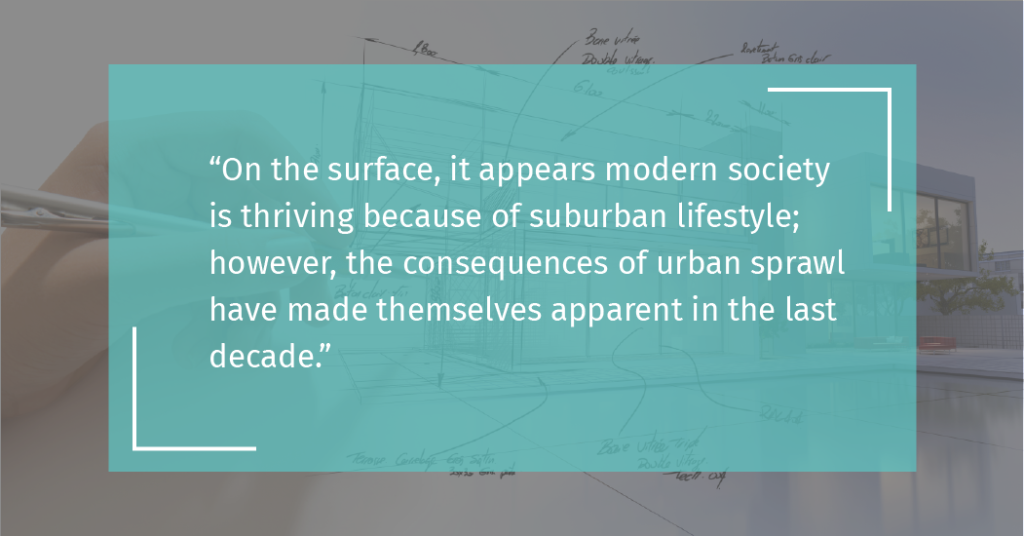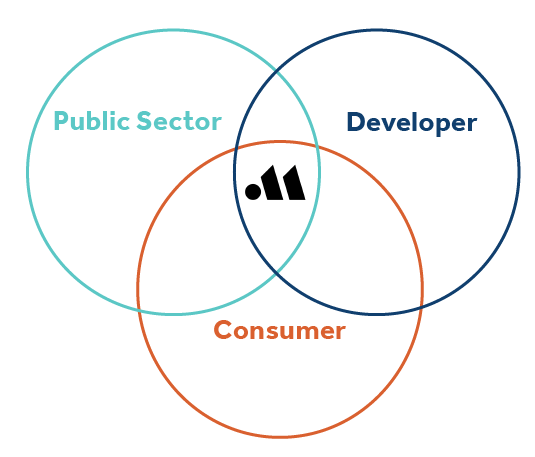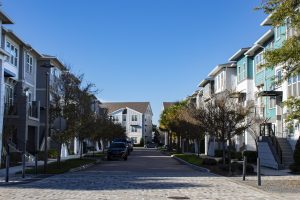
Master planning is a process that unifies the vision of residents, leaders, and developers to design a formal plan or policy. A successful master plan has the power to create a desirable community that attracts new residents while giving the existing residents the ability to thrive. The information age has exposed people to diverse lifestyles and knowledge, adding complexity to master planning. How do you create a successful community when the desires of the residents, leaders, and developers seem contradictory? Monta Consulting & Design shares how we balance the planning process in our holistic approach below.
History of Master Planning
The oldest example of Master Planning documented is Rome. The town model consisted of a town center and a grid like pattern surrounding what is known as the agoras, or common spaces. A city block’s center point, or agora, contained public services and markets surrounded by residents, while farmland remained outside the city grid. The purpose of the design was to create civility and accessibility while protecting the city’s infrastructure. The Roman Empire is the first known example of Western Civilization. The formation of the Roman Empire derived from thousands of years of human interactions and techniques developed for survival.
While many cities using the original planning ideology still thrive today, the approach changed rapidly after World War II. The shift was due to the industrial revolution and the integration of the automobile into mainstream society. As the vehicle became a household staple, people sought cheaper housing in more suburban areas. In addition, new government-regulated zoning and building codes and federal funding for infrastructure contributed to what we know today as urban sprawl.
What History has Taught Us
On the surface, it appears modern society is thriving because of the suburban lifestyle; however, the consequences of urban sprawl have made themselves apparent in the last decade.
Some of the damaging effects of urban sprawl include:
- Increased tax burden
- The inability of the Public Sector to maintain infrastructure
- Lack of efficient public transit and other public services
- Reliance on the automobile
- Negative environmental impact
- Lack of reasonably priced housing
- Unsustainable debt
Many environmentalists, economists, and urban planners have studied and projected these aftereffects into the next century. The results of these studies have inspired the creation of many non-profit groups, such as the Congress for New Urbanism, who educate and advocate against the effects of urban sprawl to mitigate damage before it becomes irreparable.
What the Current Market Demands
The current market demands the negative impact mentioned above be corrected while simultaneously maintaining the quality of life for citizens. In addition, the community’s plan must be approved by the government, accepted by the citizens, and buildable to the developer. The first step to overcoming the challenges is to understand the goals and desires of each entity. Interestingly, some of the current market’s desires could begin to address the unfavorable outcomes of existing development patterns as outlined below.

Municipalities
Increased Tax Revenue
The government at every level operates on tax revenues. At the local level, most jurisdictions receive operating revenue from property taxes and sales tax. The majority of the time, sales tax is earmarked for specific funds and purposes, but the general operating fund is a result of property taxes. As inflation rises, the cost of maintaining public safety and infrastructure is increasing, causing the public sector to find ways to improve the tax base and decrease expenses. Some approaches to accomplish this through planning are increasing density to increase the revenue per acre, shared infrastructure designs, and creating architectural standards to increase property values.
Diverse Economic Drivers
Under current development practices, many communities comprise of only housing. Fast-forward thirty years, and most of those residential neighborhoods will be abandoned and maybe considered blight. The former residents will leave for greener pastures in a new community with more to offer.
This occurrence is becoming more prevalent as suburban communities age, and leaders are attempting to mitigate it by attracting diverse economic drivers. This means being home to employers of many industries and service industries to improve the residents’ quality of life and increase the tax base. Most importantly, promoting a balanced economy encourages people to stay in a community and re-invest.
Social Equity
Part of achieving a balanced and diverse economy is through social equity, which means that people of all socio-economic classes have the opportunity to thrive. One impact of the attempts to create higher property values and tax bases is gentrification. Communities experience gentrification when wealthier people or businesses move in and improve development while driving out the existing residents due to the increased cost of living.
Society is currently witnessing a decline in services in communities that have already gone through or are in the process of gentrification. The redevelopment caused many service providers, such as first responders, teachers, custodians, landscapers, and other median-income employees to relocate. This has made services in these wealthier areas nonexistent or costly, causing an imbalance in economic productivity.

Consumers
Safety
On Maslow’s hierarchy of needs, safety is at the foundation of human vitality. It is also the foundation for nurturing civility. Public Safety is one of the government services that most people are willing to accept as a necessary expenditure. Safety was also one of the influencing factors of the original Roman empire, as leadership was located near the city’s center.
Freedom of Choice
As stated, the information age has influenced people to pursue a life appealing to them and their characteristics. There is no longer a “one size fits all” ideology on the definition of success or the American Dream. Consumers want a variety of shops, restaurants, parks, and entertainment venues to fulfill their needs and wants. In an era of convenience, they no longer want to drive one hour to achieve a fulfilling life; they want it now, in their neighborhoods.
Experiences
In addition to having accessibility to essential products and services, consumers want experiences. In planning, this equates to spaces and places that evoke positive emotions and leave consumers wishing to return. There are many ways to create an experience through effective master planning, including incorporating engaging green spaces, walkable communities, and preserving history.
Developers & Builders
Increase Returns on Investment
Developers take the most financial risk when it comes to building communities. The expense starts to accumulate well before construction. Depending on the project size, pre-construction costs such as attorneys, engineers, finance, design, and marketing can reach millions of dollars. In cases where a project is never constructed, the developer assumes the cost and has no chance of a return on investment.
In addition to pre-construction costs, they are burdened with many upfront horizontal construction expenses. Typically, they are responsible for building the infrastructure, such as roads, sewer hookups, sidewalks, and more, before bringing in any revenue. Because construction can take years, all of the debt incurred is assumed for extended periods, making it a very risky investment; it is no wonder why developers carefully weigh the potential returns on projects.
Constructability
Developers assume a tremendous amount of risk and consider the construction cost of a project during the visioning, planning, and design. The public sector and consumers often imagine something grandiose but are unfamiliar with the cost of producing a vision. It was previously mentioned that developers or builders absorb pre-construction costs, but they also assume vertical construction costs until the property is sold or leased. The higher the construction cost, the more risk they take.
Marketability
The marketability of a community or development is crucial to the investor due to the totality of risk assumed. If a development is undesirable to the consumer and does not create an attraction, it can significantly reduce the return on investment. If the construction cost is too high, making the retail price outside of what the market will tolerate, it will also reduce the return on investment. The community must be desirable to consumers to be successful.
MCD, Master Planning with Balance
Master Planning is multi-faceted, with many entities to be considered during design. Often, planners are hyper-focused on fulfilling the demands of only one of the audiences discussed. That strategy is why many projects or communities remain undeveloped or a vision is never fully realized. At Monta Consulting & Design, we are intentional about knowing every group’s desires that contribute to the success of a master plan. This deep understanding makes our approach genuinely holistic and our solutions successful. Make your vision a reality. Book a complimentary consultation today with our team of experts.




